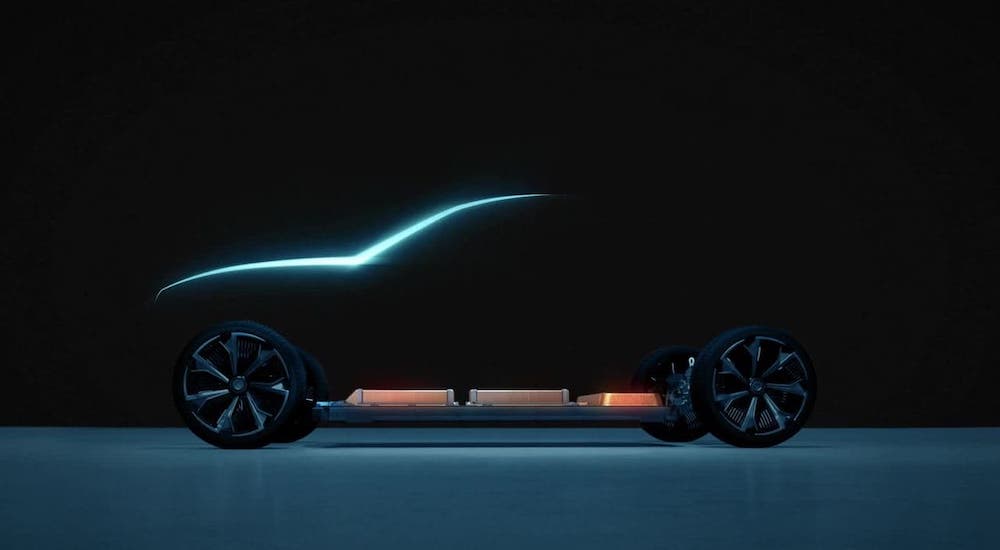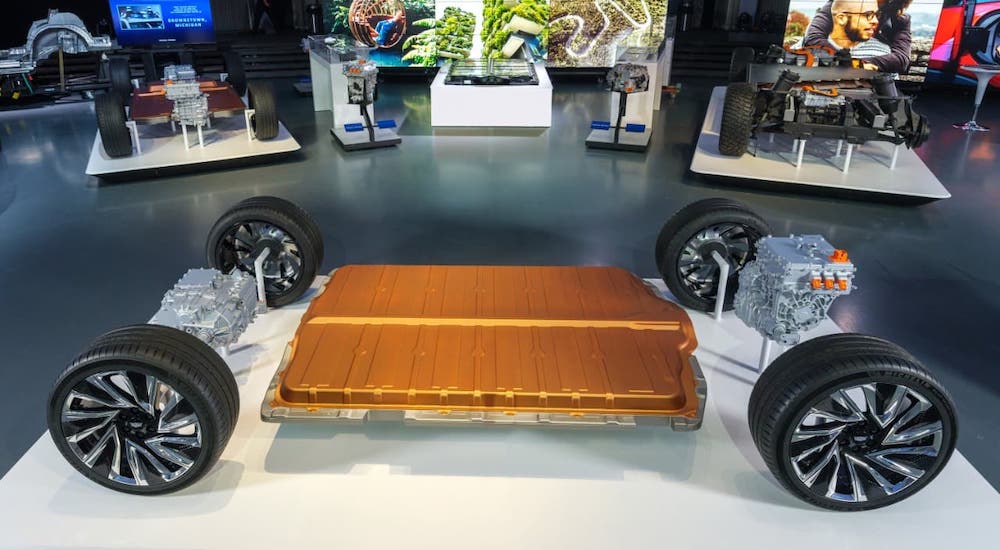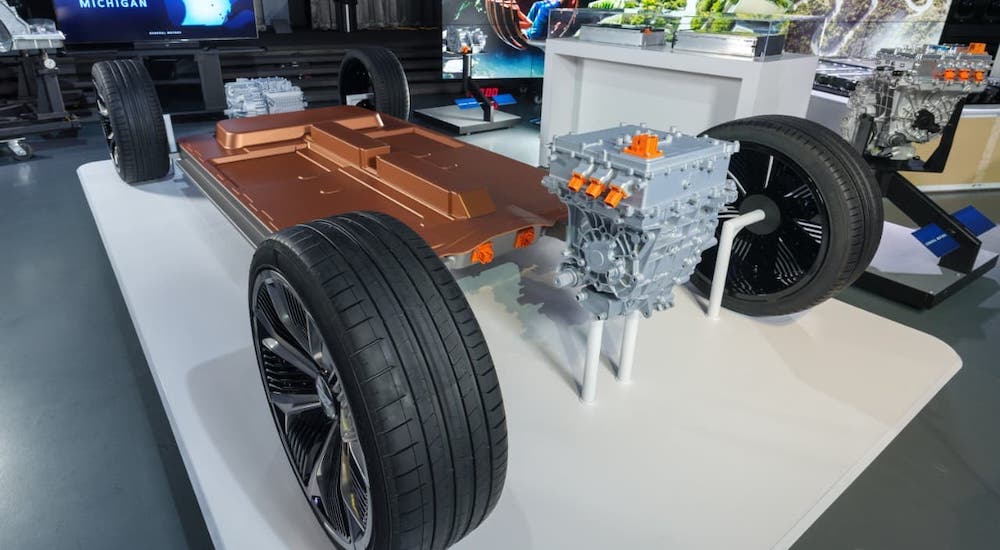Have you ever found yourself wondering, “Where is the best Chevy dealer near me?” If your answer to this question is yes, it’s understandable why, since Chevy and its parent company General Motors have always been pushing the boundaries of what an automobile is capable of. It’s been this way for many decades now, spanning all the way back to the 1917 merger between these two companies. America was in the midst of a very interesting time, to say the least, as this was during the height of World War I, and the automotive industry was starting to see a significant increase in popularity. Fast forward many years later to the present day, and the automotive industry has been reaching new heights, with manufacturers shifting their focus over to a greener future. One of these advancements has led to the creation of GM’s Ultium Battery.
There’s no denying that vehicles have been releasing harmful emissions into the air for a while. This has been an unfortunate truth that fortunately has resulted in manufacturers beginning to explore more ways to continue innovating on speed, power, and general performance while running on pure electricity. Electric vehicles (EVs) aren’t an entirely new concept. However, these vehicles are typically attached to exorbitant price tags. GM is looking to flip the script on other manufacturers and has unveiled the aforementioned Ultium Battery, which promises to dramatically cut the costs of EVs and make them more attractive to the general public. Why does this news deserve your attention? Let’s find out.
Consumer-Friendly Pricing
As previously stated, vehicles that run solely on electricity aren’t a new concept, but it’s never been achieved with the same finesse that GM is offering for Chevy drivers. Examples of the past have proven that vehicles running on pure electricity can ultimately be cost-effective, however, at the resulting cost of a significant performance loss. GM is positioning the Ultium Battery to become both an evolutionary shift for its legendary reputation for innovation and a revolution for the industry as a whole. While there is no official pricing as of yet, it’s highly speculated that GM will be offering vehicles with the Ultium Battery at a far lower cost than EVs from competing manufacturers.
These new batteries being developed by GM are built differently from ones that have been appearing in the market more recently. Advancements by GM’s research and development division have been astonishing, with GM claiming it’ll have different variations of this battery available for different vehicle classes. This will ultimately result in Ultium batteries offering high levels of customizability for manufacturers who develop different vehicle types, such as both sedans and SUVs, along with powerful pickup trucks. The question that most people have come to ask with all of these recent developments is how GM has managed to create a competitor to big-names like Tesla, at what’s looking to be a mere fraction of the price.
The Science Behind it All
Of course, batteries are a complex science, and GM wasn’t alone in its venture into the realm of electric vehicles. LG, a world-renowned company, best known for its wide range of home, entertainment, and general technologies, has been developing the ability to harness energy with the likes of battery production for many decades with their subsidiary, LG Chem. While this subsidiary was mostly an international business until recently, once it opened up its first research lab in Michigan, it began a partnership with GM.
By forming a partnership with LG, GM hopes to bring its battery technology to the forefront of the lineup of various manufacturers. According to GM, this Ultium battery will cost less than $100/kWh to produce, serving as a cost-saving measure. This is a massive benefit for GM as the current EV batteries on the market cost considerably more. But battery technology is changing faster than ever, and the competition aims to match GM’s kWh price-point in the near future. This ultimately means that GM’s battery production is far cheaper than the competition. However, by the time these Ultium battery-powered vehicles are released, the automotive industry may be a vastly different beast.
As previously mentioned, these batteries are built differently than the examples you may have seen recently. Typically, a battery within an electric vehicle has its cells stacked in a specific way. However, GM’s Ultium battery will allow manufacturers to integrate a battery with its cells stacked either horizontally or vertically. How this will benefit the manufacturer is greater variation in how it develops its newer vehicles. Let’s say Chevy wants to develop a new electric truck along with a sedan; it can now utilize the same battery technology for both vehicles and benefit from larger economies of scale.
According to GM, there are several different ways that Ultium batteries will assist manufacturers. One of these ways is a range of performance options that allow a manufacturer to prioritize certain aspects of its vehicles over others. For example, GM claims that specific variations of the Ultium battery will have the ability to achieve 0-60 MPH under 3 seconds in tandem with a 450-mile range on a singular charge. This is because of a wide spectrum of available power-outputs that manufacturers such as Chevy can take advantage of, which according to GM, can range between 50 and 200 kWh.
Additionally, the Ultium battery is expected to provide fast charging, meaning you’ll spend less time waiting and more time driving. There will be methods of installing charging ports at your residence, and you can also expect numerous charging stations to appear across the country as time moves on. GM also hopes this new Ultium battery will help with simplifying its current offering of powertrains. GM claims that across its several subsidiaries, including Chevy, it currently has 550 separate powertrain configurations. By implementing a full shift over to EVs within the next few years, GM hopes this number will be reduced to a mere 19 configurations while still serving the same purposes as the current 550 gasoline powertrains.
A Shifting Industry
EVs are the future. That much has been made clear over the past decade. It’s interesting to ponder about how fully-electric vehicles were recently considered too high-end by some, not ready enough for the mainstream for others, and sometimes both. Before that, hybrids paved the way for the EVs that are now taking over the market. But the massive influx of EVs inbound over the coming years has proven that both manufacturers and consumers are becoming comfortable with the idea of a fully-electric vehicle.
Part of this shift in popularity has been due to the greater accessibility that comes from better affordability, and companies like GM are pushing hard to continue to drive to the cost of EV technology. The end-goal of making electric vehicles mainstream is a win-win scenario where you’ll be saving money and saving the environment at the same time, something manufacturers such as Chevy have begun paying extra close attention to. If you’re interested in the currently available Chevy Bolt EV, Chevy Bolt EUV, or any of the exciting upcoming Ultium EVs, visit your local Chevy dealer to get started.






